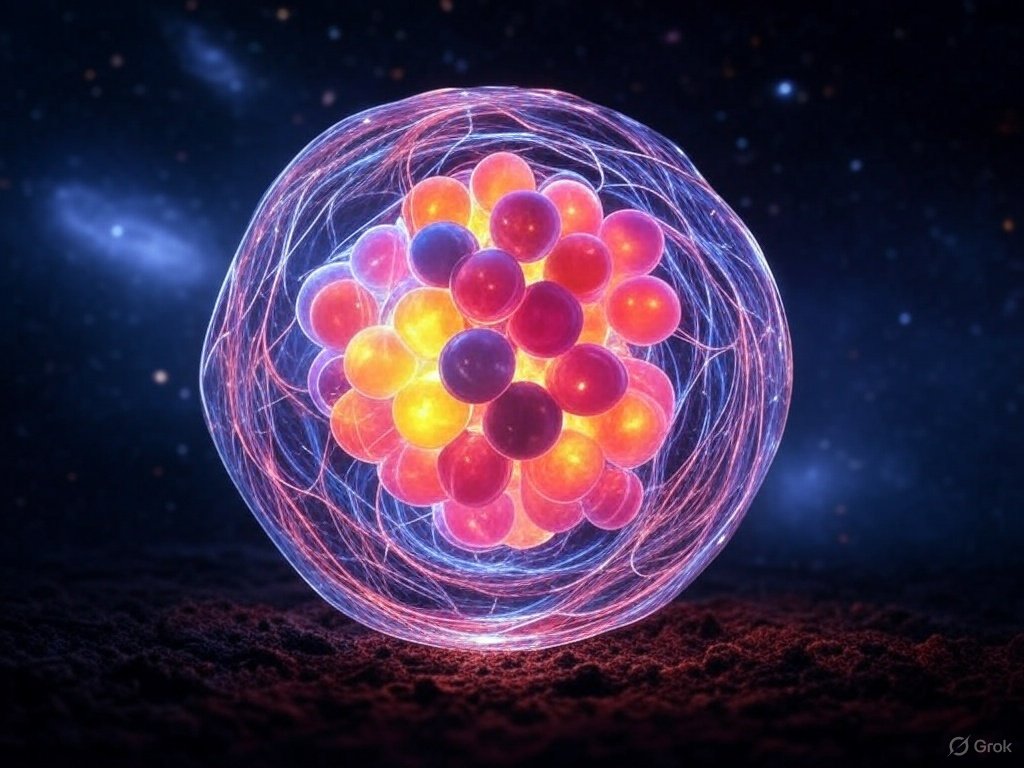In this vast universe, everything around us has a designer. Every device, structure, and system we see has been carefully planned and designed by someone. No one denies this fact because denying it would be considered absurd. We acknowledge the presence of design when our senses can perceive it, yet ironically, when it comes to things beyond our immediate comprehension, we often question their origins.
Take the atom, for instance. It is the smallest unit of matter, and on its own, it is lifeless. Yet, miraculously, when trillions of such non-living atoms combine, they form a human cell—a living, functioning entity. But here’s the ultimate question: What breathes life into these otherwise lifeless atoms?
The Enigma of Life Within Non-Living Atoms
Look around you—everything you see, from furniture to water to air, is composed of atoms. These atoms remain non-living in inanimate objects, such as a chair, a road, or a rock. However, when arranged in a specific order to form a human body, they somehow gain the ability to think, feel, and question their own existence. How does this transformation occur?
Scientists estimate that approximately 37 trillion cells come together to form a single human being. Just as a wall is built by stacking bricks, our body comprises billions of cells, each carrying an essential blueprint—DNA. And this is where the real wonder begins.
The Astonishing Complexity of DNA
DNA is not just a simple molecule; it is a highly intricate code containing vast amounts of information about an organism. Every human DNA strand holds about three billion unique instructions that define a person’s physical attributes, behaviors, and even tendencies. If we were to write down all the information stored in a single person’s DNA, it would require 1,000 volumes, with each book containing a million pages! If we attempted to store this data digitally, we would need a 215-billion-gigabyte hard drive.
And yet, every single human being has a unique DNA code. Not just the eight billion people alive today, but even those who lived before us had entirely different DNA sequences. The level of detail in DNA is beyond human comprehension—its precision, complexity, and efficiency defy randomness.
Could DNA Be a Mere Coincidence?
Let’s entertain the idea that atoms randomly formed on their own. Let’s assume that these atoms also randomly combined into particles, which then developed positive and negative charges by pure chance. Even if an atom were to self-assemble somehow, the fundamental question remains: How does a lifeless entity, when placed in a structured form within the human body, suddenly become capable of thinking, remembering, and even questioning its existence?
DNA is a code—a structured set of instructions. A code always implies the presence of an intelligent mind behind it. We do not attribute the programming of a computer software to chance, nor do we believe a book could write itself without an author. How, then, can such an advanced, intricate system—one that carries the blueprint of life itself—be the result of mere accidents?


The Debate: Evolution, Intelligent Design, or a Greater Mystery?
Science attempts to explain DNA through the lens of evolution. The Human Genome Project has mapped the entire DNA sequence, identifying the genetic information stored within. According to the Theory of Evolution, DNA has gradually evolved over billions of years through natural selection and random mutations. However, this explanation still falls short of addressing one crucial question: Who or what created the first DNA molecule?
Many argue that such a complex and information-rich structure cannot emerge out of randomness. The Intelligent Design Theory suggests that an advanced intelligence must have been behind the creation of life’s blueprint. This belief is deeply rooted in the philosophy that every system requires a designer.
Religious and spiritual perspectives align with this argument, proposing that a higher power must have created the universe and everything within it, including DNA. The presence of such intricate biological mechanisms only strengthens their faith in a Supreme Creator.
The Ultimate Question: Who Designed the Designer?
If we accept the premise that life is too complex to have emerged by accident, then a follow-up question arises: Who designed the Designer? If nothing can exist without a creator, then what about the creator itself? Some people counter this by arguing that the existence of a higher intelligence is beyond human understanding, much like how a machine cannot comprehend the mind of its programmer.
Science continues to search for answers, exploring possibilities such as the role of extraterrestrial influences—with some theories suggesting that the building blocks of life arrived on Earth via meteorites containing amino acids. However, even this hypothesis does not explain how those amino acids originally came into existence.
The Search for Truth Continues
At the end of the day, the question of DNA’s origin remains one of the greatest mysteries of science, philosophy, and spirituality. Are we merely the product of an unplanned evolutionary process? Or is there a grand design behind our existence?
This debate fuels human curiosity and pushes the boundaries of scientific exploration. Whether one leans towards evolution, intelligent design, or divine creation, the complexity of DNA continues to baffle and inspire. The more we discover, the more questions arise. Perhaps the answer lies beyond our current understanding, waiting to be unlocked in the future.
What do you think? Is DNA the result of an accident, or is it the signature of an intelligent designer?